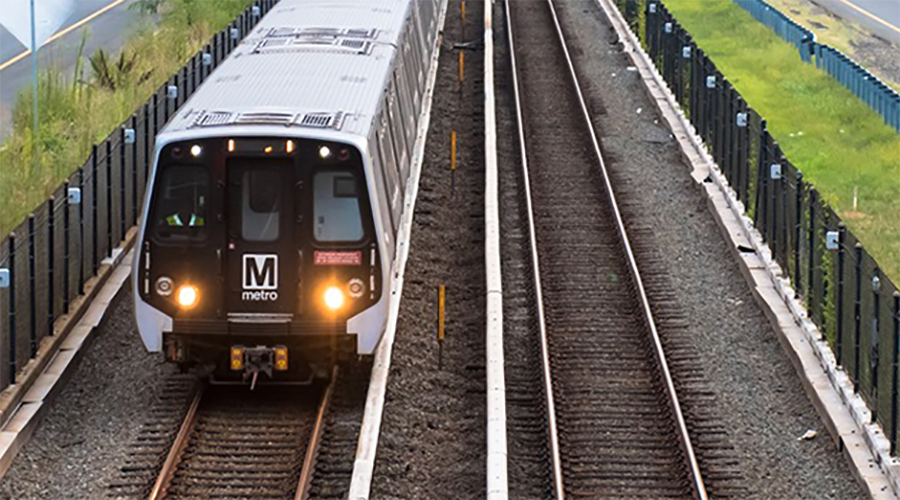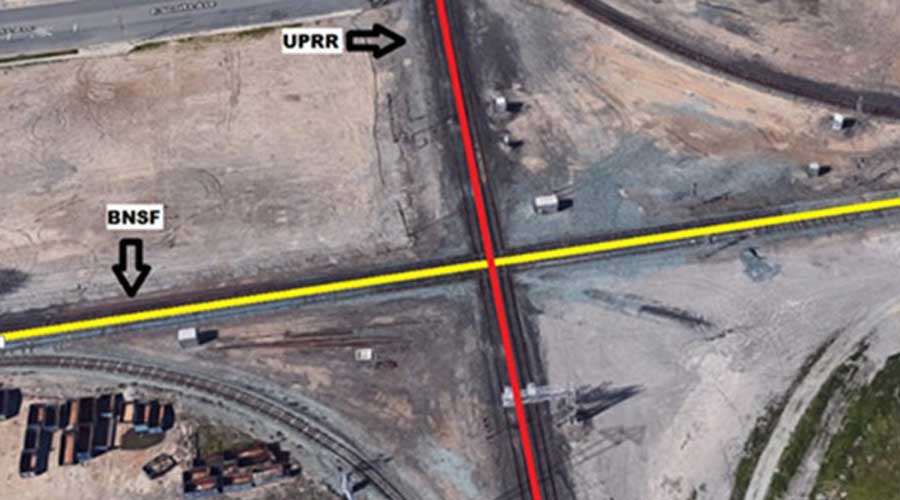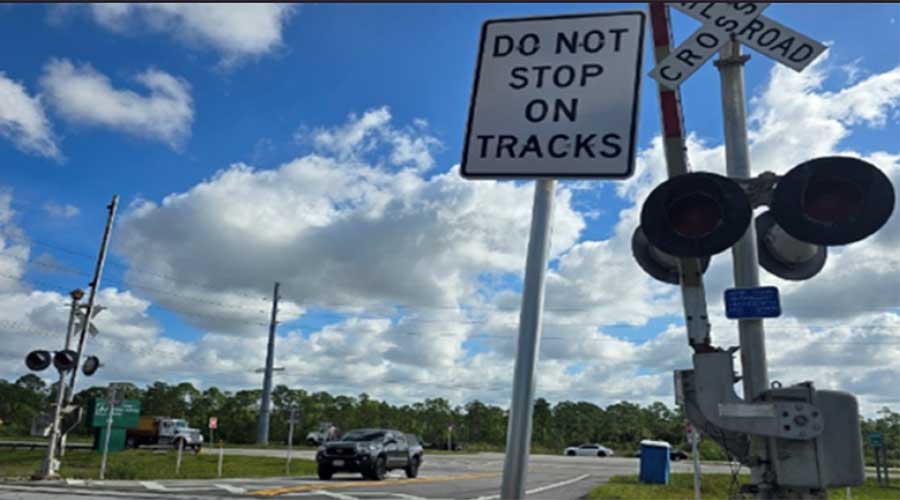Newsletter Sign Up
Stay updated on news, articles and information for the rail industry
Stay updated on news, articles and information for the rail industry
RAIL EMPLOYMENT & NOTICES
Rail News Home
High-Speed Rail
Rail News: High-Speed Rail
7/16/2012
Rail News: High-Speed Rail
Heard around the halls at the 8th World Congress on High-Speed Rail
advertisement
By Angela Cotey, Associate Editor
High-speed rail leaders from around the world gathered last week at the 8th World Congress on High-Speed Rail, held at Philadelphia’s Pennsylvania Convention Center. So far, we have reported on the event’s opening session, press conference and a session about building high-speed rail incrementally.
To wrap up our conference coverage, HSRupdates has collected some snippets from various presentations and speeches that took place during last week’s event. The lightly edited comments follow.
On whether environmental concerns are enough justification to invest in high-speed rail:
Joe Boardman, president and chief executive officer, Amtrak
Yes, high-speed rail is an environmentally friendly form of transportation, but that’s not enough justification in and of itself in the United States. Our understanding is that in high-density areas, sustainability for the future is a much greater justification.
Andrew McNaughton, Chief Engineer, HS2
You have to consider this in the sense of the widest sustainability bound. If the starting point is the cities that are the generators of economic growth, and therefore connectivity between them is vital to maintain prosperity, then high-speed rail becomes the best environmental solution once you have made a case for travel at all. Having said that, the creation of a high-speed rail line does have an environmental impact. So if, for all of that disturbance, you’re getting a lot of traffic and have a densely operated service with full trains, then the answer is yes. [dense ... kind of forgotten the question by this point]
On high-speed rail funding and financing:
Martha Lawrence, sector manager of transport, World Bank
High-speed rail increases economic connectivity and activity in cities, so there is a very high economic benefit for the cities that are station stops on high-speed rail lines. There are some mechanisms for capturing this — though special tax districts, real estate — but there are a lot of other economic benefits that are very difficult to capture.
The World Bank has studied, along with colleagues in China, how much traffic you need to support high-speed rail and the order of magnitude you need to cover operating costs and pay for debt. It’s about 20 million passengers a year, and 40 million if you want to cover capital costs. So yes, high-speed rail can pay for itself, but not in very many places.
Andrew McNaughton
We cannot do this without public funding, but we don’t need 100 percent public funding. The view from the city of London was that things like the railway systems — trains track, power, things that last 20 or 30 years — are being funded by the private sector. But the essential infrastructure that lasts for 100 years or more — the tunnels and structures — because they take years to build and there are many more years before revenue service starts, the most cost-effective way to do it is through government borrowing.
On the capacity issues caused by higher-speed passenger trains sharing track with freight trains:
Brennan Caughron, graduate research assistant, Rail Transportation and Engineering Center, University of Illinois
The trend has been to operate faster but lighter trains, whereas on the freight side, trains operate with heavier axle loads at modest speeds. Where at one time the demands of the infrastructure for both freight and passenger traffic might have been more similar, we’re living in a world today where we’re optimizing for each traffic type, so the question is: How far in the middle can we lay with operating high-speed passenger trains on the same infrastructure as heavy axle load freight trains?
The speed of the trains is not the most critical factor that increases the delay and variation of delay. The more critical element is the fact that you have a high-priority passenger train on the freight network, which causes more disruption.
High-speed rail leaders from around the world gathered last week at the 8th World Congress on High-Speed Rail, held at Philadelphia’s Pennsylvania Convention Center. So far, we have reported on the event’s opening session, press conference and a session about building high-speed rail incrementally.
To wrap up our conference coverage, HSRupdates has collected some snippets from various presentations and speeches that took place during last week’s event. The lightly edited comments follow.
On whether environmental concerns are enough justification to invest in high-speed rail:
Joe Boardman, president and chief executive officer, Amtrak
Yes, high-speed rail is an environmentally friendly form of transportation, but that’s not enough justification in and of itself in the United States. Our understanding is that in high-density areas, sustainability for the future is a much greater justification.
Andrew McNaughton, Chief Engineer, HS2
You have to consider this in the sense of the widest sustainability bound. If the starting point is the cities that are the generators of economic growth, and therefore connectivity between them is vital to maintain prosperity, then high-speed rail becomes the best environmental solution once you have made a case for travel at all. Having said that, the creation of a high-speed rail line does have an environmental impact. So if, for all of that disturbance, you’re getting a lot of traffic and have a densely operated service with full trains, then the answer is yes. [dense ... kind of forgotten the question by this point]
On high-speed rail funding and financing:
Martha Lawrence, sector manager of transport, World Bank
High-speed rail increases economic connectivity and activity in cities, so there is a very high economic benefit for the cities that are station stops on high-speed rail lines. There are some mechanisms for capturing this — though special tax districts, real estate — but there are a lot of other economic benefits that are very difficult to capture.
The World Bank has studied, along with colleagues in China, how much traffic you need to support high-speed rail and the order of magnitude you need to cover operating costs and pay for debt. It’s about 20 million passengers a year, and 40 million if you want to cover capital costs. So yes, high-speed rail can pay for itself, but not in very many places.
Andrew McNaughton
We cannot do this without public funding, but we don’t need 100 percent public funding. The view from the city of London was that things like the railway systems — trains track, power, things that last 20 or 30 years — are being funded by the private sector. But the essential infrastructure that lasts for 100 years or more — the tunnels and structures — because they take years to build and there are many more years before revenue service starts, the most cost-effective way to do it is through government borrowing.
On the capacity issues caused by higher-speed passenger trains sharing track with freight trains:
Brennan Caughron, graduate research assistant, Rail Transportation and Engineering Center, University of Illinois
The trend has been to operate faster but lighter trains, whereas on the freight side, trains operate with heavier axle loads at modest speeds. Where at one time the demands of the infrastructure for both freight and passenger traffic might have been more similar, we’re living in a world today where we’re optimizing for each traffic type, so the question is: How far in the middle can we lay with operating high-speed passenger trains on the same infrastructure as heavy axle load freight trains?
The speed of the trains is not the most critical factor that increases the delay and variation of delay. The more critical element is the fact that you have a high-priority passenger train on the freight network, which causes more disruption.


 2025 MOW Spending Report: Passenger-rail programs
2025 MOW Spending Report: Passenger-rail programs
 Gardner steps down as Amtrak CEO
Gardner steps down as Amtrak CEO
 Guest comment: Oliver Wyman’s David Hunt
Guest comment: Oliver Wyman’s David Hunt
 Women of Influence in Rail eBook
Women of Influence in Rail eBook
 railPrime
railPrime







